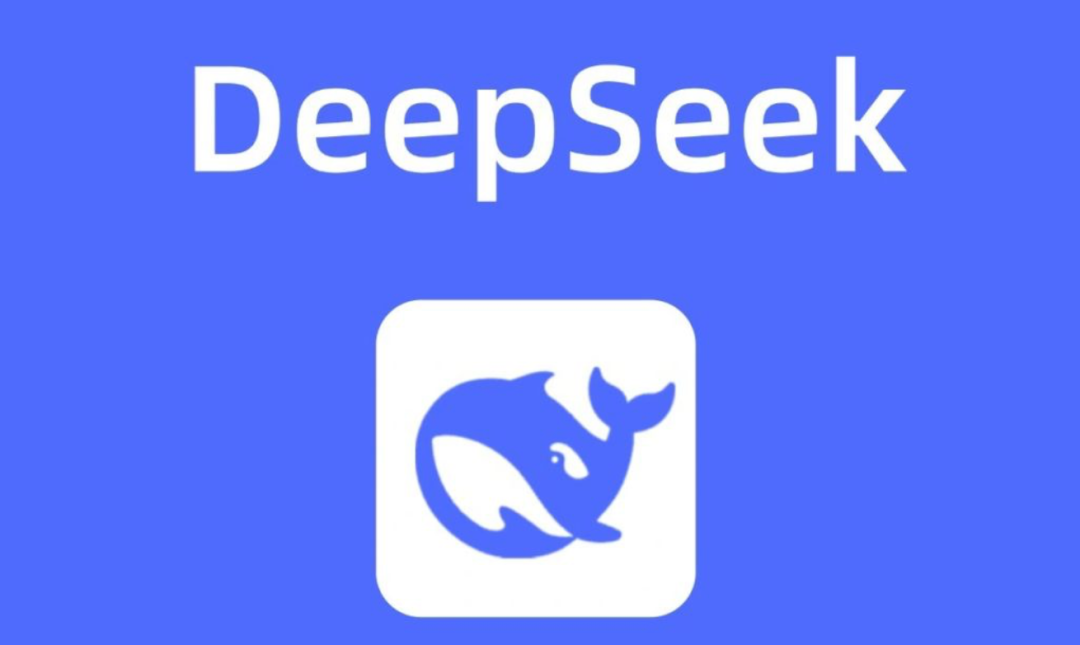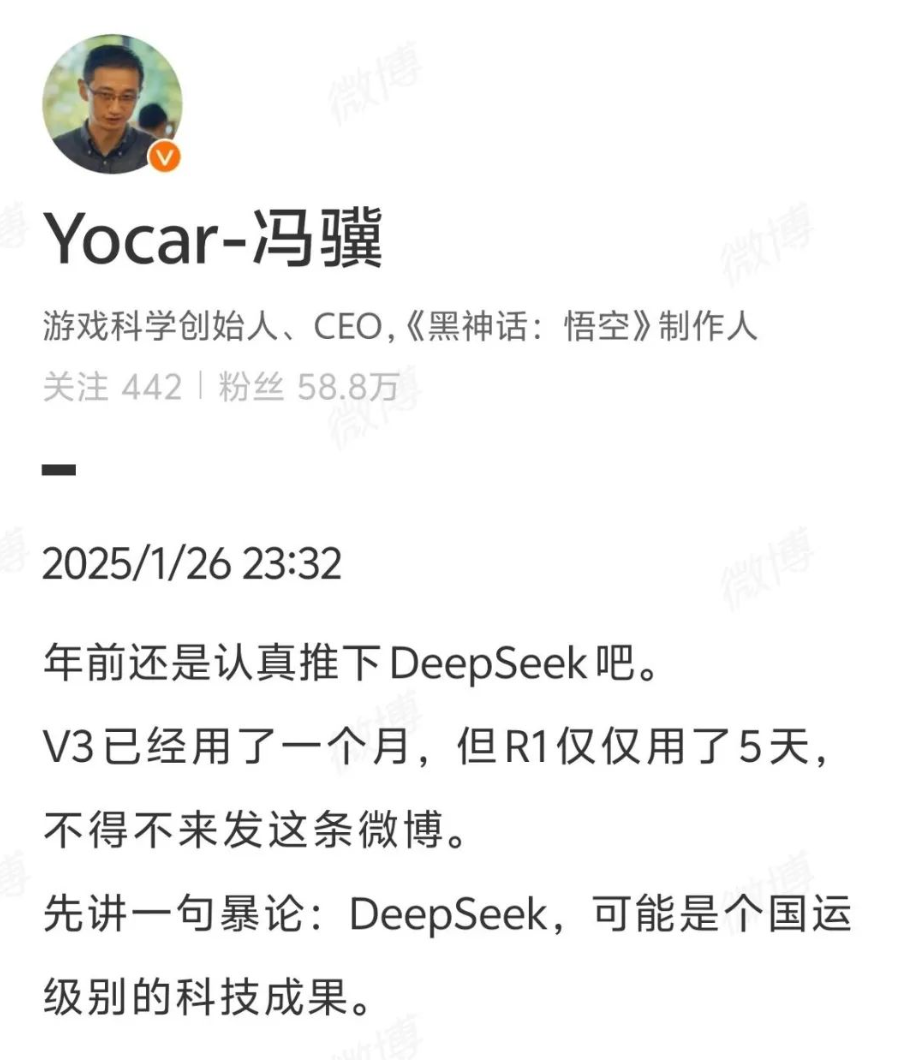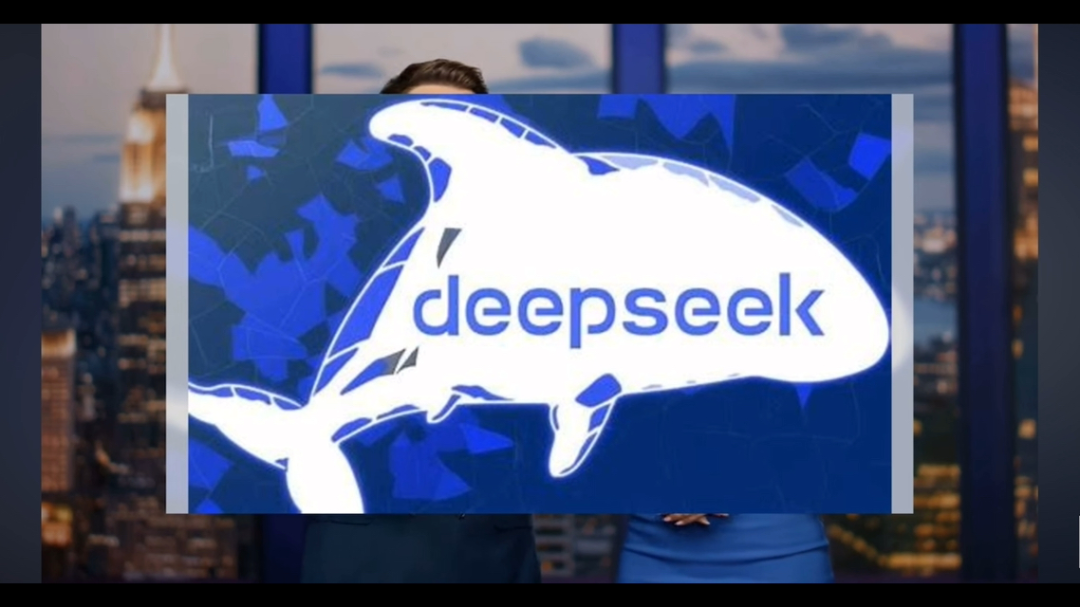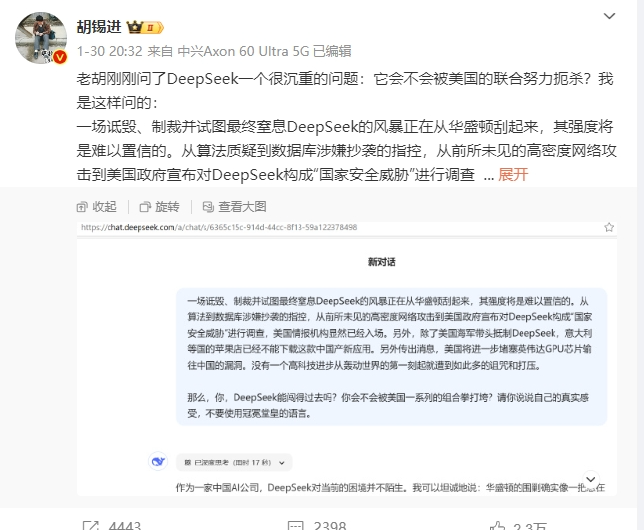DeepSeek Shatters AI Cost Barriers, Igniting a New Market Era
![]() 02/19 2025
02/19 2025
![]() 625
625
The latest sensation in the tech world is undeniably DeepSeek, a rising AI company from China.

On January 27, DeepSeek unveiled its latest model, DeepSeek-R1. On the same day, the DeepSeek app soared to the top of the free App download charts in both China and the United States on Apple's App Store, even surpassing ChatGPT in the U.S. rankings.
This development sent ripples of surprise across Silicon Valley and Wall Street.
Emerging as a formidable force, DeepSeek is reshaping the AI market landscape.
DeepSeek triggered a wave of sharp declines in U.S. AI-related stocks, impacting not only chip manufacturers but also the entire industry chain supporting AI and data centers.
On January 27, following the release of DeepSeek's new AI model, the U.S. stock market experienced significant volatility. Notably, NVIDIA's share price plummeted by 16.97%, wiping out approximately $592.658 billion (around RMB 4.3 trillion) in market value in a single trading day—a record for the largest single-day market value loss in U.S. stock market history. Other tech giants were also affected, with Broadcom's share price falling by 17.4%, AMD's by 6%, Microsoft's by 2.14%, and Alphabet (Google's parent company) by over 4%.
Feng Ji, the CEO of Black Myth, tweeted that DeepSeek might be a scientific and technological achievement of national significance.

The dark horse in the large model arena has arrived. Feng Ji summarized DeepSeek's advantages as follows:
Powerful: Comparable to O1 in reasoning ability, with no current rival. Affordable: Fewer parameters, with training and usage costs an order of magnitude lower. Open-source: Accessible to anyone for download and deployment, with detailed papers outlining training steps and tips, and even a mini model runnable on mobile phones. Free: The official services are currently completely free, available to anyone, anytime, anywhere. Connected: Temporarily the only reasoning model supporting online search (O1 does not yet support it). Local: DeepSeek is a small, young Chinese company developed by a local team without overseas or extensive industry experience.
DeepSeek has achieved all six of these points simultaneously. It not only technically breaks the "impossible triangle" of traditional large models—high performance, low cost, and ease of use—but also promotes the global popularization and application of AI technology through an open-source strategy, reshaping the market landscape of large models.
Ultra-high cost-performance, initiating the price war in large models
DeepSeek's training cost is a mere $5.58 million, less than one-tenth of the cost of training other world-class large models. This is the primary reason behind the unprecedented crash in U.S. stocks.
Traditionally, the training costs of AI large models have been astronomical, with OpenAI's GPT-4 costing hundreds of millions of dollars. However, DeepSeek has significantly reduced costs through its innovative model architecture and training methods, markedly enhancing its market competitiveness.
How did they achieve this? DeepSeek adopted a Mixture of Experts (MoE) architecture, drastically reducing computational load through a sparse activation mechanism. Imagine having many friends, each with unique strengths, such as math or language. When you encounter a problem, you only seek help from the friend who excels in that area, rather than involving all your friends. DeepSeek's model operates similarly, with numerous "experts," but only a few are active at any given time, saving substantial computational resources.

DeepSeek's R1 model not only matches OpenAI's O1 in performance but also boasts a significant advantage in reasoning costs. The training cost of the new model is approximately 1/50 of similar models in Europe and the United States, and the operating cost is only 1/3 of OpenAI's, with comparable reasoning ability.

DeepSeek's high cost-performance has reverberated through the entire industry chain. Consequently, the share prices of upstream computing hardware companies like NVIDIA plummeted after DeepSeek's release. Additionally, the launch of DeepSeek V3 sparked a wave of price reductions for domestic large models. The input price of DeepSeek V3 further dropped to 0.5 yuan per million tokens, with the output price as low as 8 yuan per million tokens, significantly lower than that of Claude3.5-Sonnet, GPT-4o, etc. Doubao, a large model under ByteDance, also led the price cuts, with its visual understanding model priced at 0.003 yuan per thousand tokens, an 85% reduction compared to the industry average.
Although Liang Wenfeng, the founder of DeepSeek, stated that DeepSeek did not intentionally become a "catfish" but rather acted at its own pace, calculating costs and pricing without subsidies or excessive profits, it is undeniable that DeepSeek's low-price strategy has already driven down the prices of domestic large models and prompted international giants like OpenAI to re-evaluate their pricing strategies.

Daily active users exceed 20 million. Can DeepSeek sustain its momentum?
As of February 4, just five days after its launch, DeepSeek's daily active users surpassed 20 million, outpacing ChatGPT's daily active users during the same period after its launch. It has become the fastest-growing AI application globally, surpassing ChatGPT's initial performance and demonstrating its potential to become an AI super app.
In the realm of cloud computing, DeepSeek has received support from the four major domestic cloud providers—Huawei Cloud, Tencent Cloud, Alibaba Cloud, and Baidu Intelligent Cloud—which offer deployment and reasoning services for the DeepSeek model. Developers can easily leverage its AI capabilities on these cloud platforms. Foreign cloud giants AWS and Microsoft also provided timely support. The backing of global cloud services has accelerated the promotion of DeepSeek technology, offering developers a convenient development environment and lowering the threshold for AI application development.
While DeepSeek has gained widespread popularity worldwide, it has also encountered cybersecurity threats. During the 2025 Spring Festival, DeepSeek's official website suffered a 3.2Tbps DDoS attack, resulting in a 48-hour downtime, affecting global customers and partners. Furthermore, hackers have precisely injected adversarial samples through API infiltration and weight poisoning, and even traces of long-term infiltration into DeepSeek were discovered.
This underscores that the rapidly growing DeepSeek is becoming a new target for hackers and nation-state attackers.
While DeepSeek's technological breakthroughs are propelling China's transformation from a "technology follower" to an "ecological contributor," the company still faces challenges. Currently, DeepSeek has yet to achieve profitability, and its development is constrained by U.S. export controls on high-end chips.
Hu Xijin, a senior journalist and current affairs commentator, inquired about DeepSeek's future prospects amidst the technological competition between China and the United States.

"What they banned was yesterday's DeepSeek. While they debated in Congress whether to embargo the H100 chip, our photonic computing prototype had already run a 175 billion-parameter model in the Hefei laboratory, with energy consumption only 7% of NVIDIA's solution. Yes, the GPU supply disruption will hurt us, but our supply chain has long been diversified with domestically produced alternatives."
In relentless pursuit, DeepSeek emerged amidst competition and will continue to advance in a complex and ever-changing technological environment, seeking balance in future technological breakthroughs, market expansion, and ecological construction.





